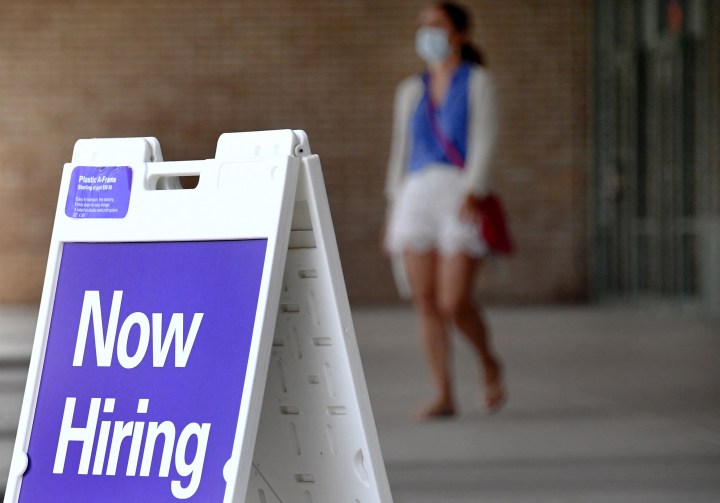
As labor shortage persists, fewer immigrants means fewer workers
As labor shortage persists, fewer immigrants means fewer workers

The labor market had another strong month of job growth in April, adding 428,000 jobs to the economy. And businesses sure aren’t about to take down their Help Wanted signs. We saw job openings hit an all-time high in March in the latest Job Openings and Labor Turnover Summary.
A sharp decline in immigration to the U.S. could be contributing to the country’s labor shortage. According to research from economists at the University of California, Davis, the country had 2 million fewer working-age immigrants at the end of 2021 than it would have had if pre-pandemic immigration trends had continued.
Marketplace senior economics contributor Chris Farrell spoke to Marketplace’s David Brancaccio about the consequences of the decline in immigration. The following is an edited transcript of their conversation.
David Brancaccio: Tell me more about how much immigration is down.
Chris Farrell: I want to highlight calculations by two scholars at the University of California, Davis. What they say is by the end of 2021, there were some 2 million fewer working-age immigrants living in the U.S. than there would have been if the pre-2020 immigration trend had continued. And this halt in working-age immigrants reflects a variety of factors: closed borders, restrictions on foreign nationals coming here to learn and work and, of course, the pandemic.
Brancaccio: Right. So largely Trump immigration policies, but also the pandemic. So what do we know about the impact of these lower levels of immigration on the U.S. economy?
Farrell: For one thing, the lack of workers is holding back business, especially in the sectors of the economy with a traditionally high percentage of immigrant labor. For another, the scholars say nearly half of the missing 2 million would have been college educated, and so they say this is a very substantial loss of skilled workers. If you measure it in human capital terms, it will subtract from the economy’s long-term growth potential.
Brancaccio: And we’ve been covering this for years. Crucial industries, semiconductors to biotech, have depended on immigrant scientists, engineers, entrepreneurs, skilled workers coming from other countries.
Farrell: And less appreciated, it isn’t only the highly educated immigrants that are entrepreneurs. Immigrants have created businesses from the corner grocery store to the local builder. Immigrants are almost twice as likely as native-born Americans to become entrepreneurs, according to the Kauffman Foundation, and less educated immigrants are critical in a number of industries.
Brancaccio: So perhaps one approach for dealing with the labor shortage is to embrace higher levels of immigration. But is there the political ability for that to happen?
Farrell: Immigration reform, putting out the welcome mat, [is] politically difficult. That said, there’s sort of been this cottage industry of economic studies and social science research that’s looked into the economic impact of immigrants. And these scholars, they’ve created this nuanced picture of the largely positive gains from immigration. So the economics seems clear. One of the easiest ways to revive the economy’s dynamism: Reestablish America’s historic role as a destination for ambitious immigrants.
There’s a lot happening in the world. Through it all, Marketplace is here for you.
You rely on Marketplace to break down the world’s events and tell you how it affects you in a fact-based, approachable way. We rely on your financial support to keep making that possible.
Your donation today powers the independent journalism that you rely on. For just $5/month, you can help sustain Marketplace so we can keep reporting on the things that matter to you.












